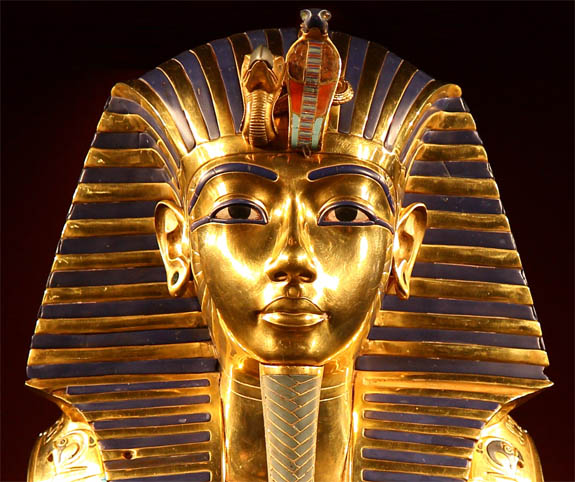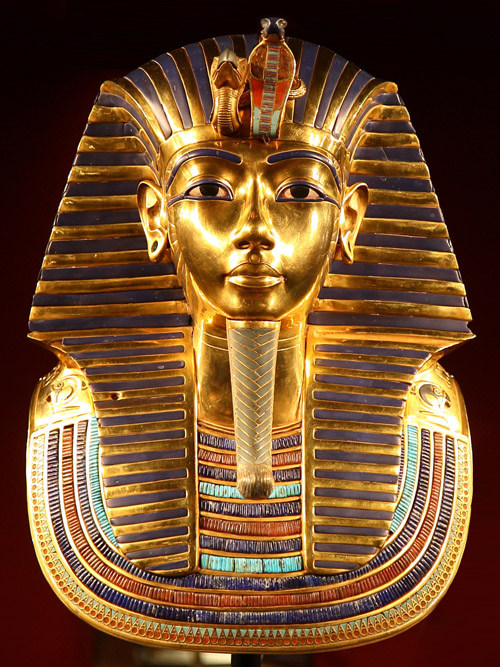June 16th, 2016
To the ancient Egyptians, gold was divine. The gods, they believed, had skin of gold, bones of silver and hair of lapis lazuli. The Turin Papyrus Map, which dates to 1160 BC, affirms the location of 1,300 gold mines, at least 100 of which have been rediscovered and explored in the desert valleys east of the Nile.

Today, armed with clues from the ancient mines, modern prospectors are trying to locate untapped Egyptian reserves said to be worth hundreds of billions of dollars.
When English Egyptologist Howard Carter discovered the 3,300-year-old tomb of King Tutankhamun in 1925, he was impressed by a sarcophagus that held not one, but three, coffins. The outer two were crafted in wood, covered in gold and adorned with many semiprecious stones. The inner coffin was made of solid gold.

The king's death mask — constructed of two sheets of hammered gold and weighing 22.5 pounds — is considered one of the masterpieces of Egyptian art. In all, Tutankhamun's tomb was filled with more than 500 items, many made of pure gold.
Despite their reverence of gold, the precious metal held no monetary importance in ancient Egyptian commerce. Salaries were paid in goods, and trade was done with barter. Gold maintained a vital role in religious ceremonies, adorning royal jewelry, artifacts and chariots.
Contemporary treasure hunters are betting that the ancient miners — lacking modern tools and know-how — left plenty of gold behind. Those miners rarely dug down more than 20 or 30 meters.
"We are looking where they had mined gold before," Mark Campbell, the chief executive of Canada-based Alexander Nubia, told CNN. "Using modern mining techniques and technology, we hope to recover a lot of the gold that [the Roman and Egyptian civilizations] missed, because they were unable to mine it and process it."
(Nub, which appears in the exploration company's name, is the Egyptian term for gold.)
Mining for gold in the Egyptian desert is risky business due to the extraordinary expense of modern extraction techniques. Campbell estimated the investment would be "somewhere in the order of 500 million to a billion dollars."
Credit: Tutankhamen's death mask by Carsten Frenzl from Obernburg, Derutschland (TUT-Ausstellung_FFM_2012_47) CC BY 2.0, via Wikimedia Commons.

Today, armed with clues from the ancient mines, modern prospectors are trying to locate untapped Egyptian reserves said to be worth hundreds of billions of dollars.
When English Egyptologist Howard Carter discovered the 3,300-year-old tomb of King Tutankhamun in 1925, he was impressed by a sarcophagus that held not one, but three, coffins. The outer two were crafted in wood, covered in gold and adorned with many semiprecious stones. The inner coffin was made of solid gold.

The king's death mask — constructed of two sheets of hammered gold and weighing 22.5 pounds — is considered one of the masterpieces of Egyptian art. In all, Tutankhamun's tomb was filled with more than 500 items, many made of pure gold.
Despite their reverence of gold, the precious metal held no monetary importance in ancient Egyptian commerce. Salaries were paid in goods, and trade was done with barter. Gold maintained a vital role in religious ceremonies, adorning royal jewelry, artifacts and chariots.
Contemporary treasure hunters are betting that the ancient miners — lacking modern tools and know-how — left plenty of gold behind. Those miners rarely dug down more than 20 or 30 meters.
"We are looking where they had mined gold before," Mark Campbell, the chief executive of Canada-based Alexander Nubia, told CNN. "Using modern mining techniques and technology, we hope to recover a lot of the gold that [the Roman and Egyptian civilizations] missed, because they were unable to mine it and process it."
(Nub, which appears in the exploration company's name, is the Egyptian term for gold.)
Mining for gold in the Egyptian desert is risky business due to the extraordinary expense of modern extraction techniques. Campbell estimated the investment would be "somewhere in the order of 500 million to a billion dollars."
Credit: Tutankhamen's death mask by Carsten Frenzl from Obernburg, Derutschland (TUT-Ausstellung_FFM_2012_47) CC BY 2.0, via Wikimedia Commons.


